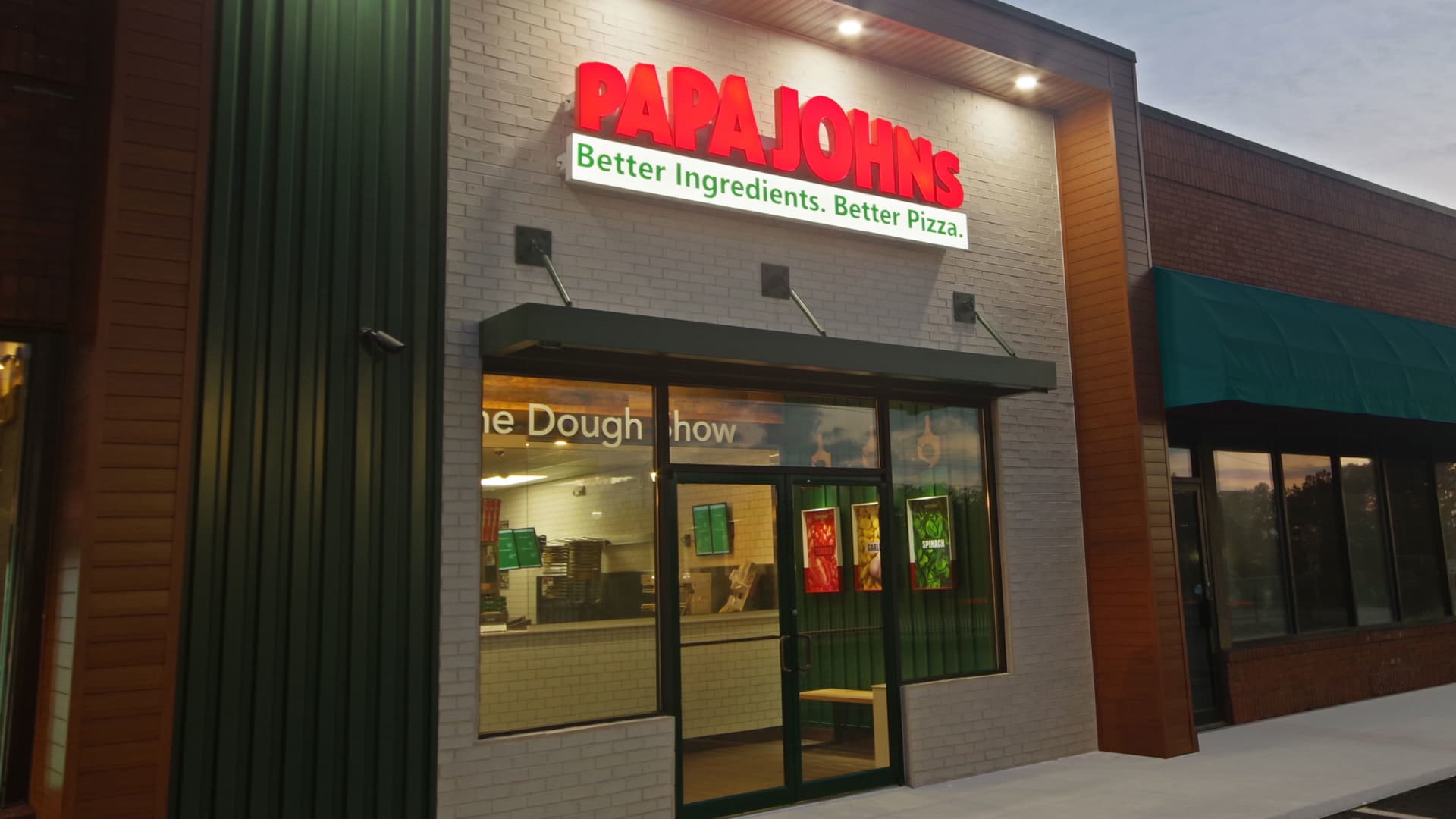
Signage is displayed outside a Yum! Brands Inc. Taco Bell and Kentucky Fried Chicken (KFC) restaurant in Louisville, Kentucky, U.S., on Thursday, Jan. 30, 2020.
Luke Sharrett | Bloomberg | Getty Images
Yum Brands on Tuesday reported quarterly earnings and revenue growth, fueled by strong demand for Taco Bell and improved U.S. sales for KFC.
The restaurant company also announced plans to review strategic options for Pizza Hut. The embattled pizza chain has struggled to win over diners in recent years. In its home market, pizza fatigue after pandemic lockdowns have led to slumping sales, and rivals like Domino’s Pizza have stolen share from Pizza Hut.
Yum shares rose 2% in premarket trading.
Here’s what Yum reported compared with what Wall Street was expecting, based on a survey of analysts by LSEG:
- Earnings per share: $1.58 adjusted. May not compare to $1.49 expected.
- Revenue: $1.98 billion vs. $1.97 billion expected
Yum reported third-quarter net income of $397 million, or $1.41 per share, up from $382 million, or $1.35 per share, a year earlier.
Excluding the cost of its strategic review of Pizza Hut and other items, the company earned $1.58 per share.
Net sales rose 8% to $1.98 billion.
Yum’s digital sales, which includes mobile, delivery and kiosk orders, reached $10 billion system-wide and accounted for roughly 60% of orders.
The company’s same-store sales increased 3%, lifted by Taco Bell and KFC.
Taco Bell’s same-store sales climbed 7% in the quarter, topping analyst estimates of 5.2% growth, according to StreetAccount. While other fast-food chains have seen their sales slump, the Mexican-inspired chain has bucked the trend. Its value perception, even among pinched low-income diners, and buzzy menu innovation have helped Taco Bell grow sales.
Yum announced that it is buying 128 Taco Bell locations in the Southeast U.S. The company franchises about 98% of its restaurants.
KFC reported same-store sales growth of 3%, beating StreetAccount estimates of 2.4%. In China, the brand’s largest market, system sales rose 6%. And in the U.S., where it has lost market share to new players like Raising Cane’s, KFC’s same-store sales increased 2%.
Only Pizza Hut saw same-store sales declines. The struggling pizza chain reported same-store sales fell 1% in the quarter, fueled by a 7% drop in sales at U.S. restaurants open at least a year. Analysts surveyed by StreetAccount were projecting same-store sales declines of just 0.3%.






